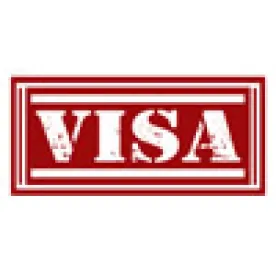The Department of Labor’s and the Department of Homeland Security’s joint Interim Final Rule (IFR) imposes new burdens on the certification of employment of nonimmigrant workers in temporary, non-agricultural employment and stiffens enforcement obligations applicable to employers of H-2B workers and U.S. workers similarly employed. The IFR took effect on April 29, 2015.
The H-2B visa program allows up to 66,000 visas each year for the entry of low-skilled, non-agricultural guestworkers into the United States. The IFR fills a regulatory gap occasioned by a vacatur of the 2008 H-2B regulations by a federal district court on March 4, 2015. The court vacated and permanently enjoined DOL from implementing or enforcing the DOL’s 2008 H-2B regulations on the ground that DOL lacked authority under the Immigration and Nationality Act to unilaterally issue regulations in the H-2B program. Perez v. Perez, No. 3:14-cv-682 (N.D. Fla. Mar. 4, 2015). This decision forced the DOL to immediately discontinue the processing of H-2B labor applications, but processing soon resumed after the District Court granted a temporary stay of the vacatur through May 15, 2015.
The IFR, which is virtually identical to the DOL’s 2012 H-2B Final Rule which was never implemented, focuses on enhanced U.S. worker recruitment and strengthened worker protections. It significantly and fundamentally changes the H-2B visa program by imposing onerous and costly new conditions and requirements on H-2B employers. Major features of the IFR include the establishment of a national electronic job registry for all H-2B jobs to improve U.S. worker access to these temporary jobs, extension of H-2B worker protections to corresponding U.S. workers, and the requirement that employers guarantee employment and wage payment for a certain period of time (“three-fourths guarantee”).
Significant features of the IFR include:
- Extending H-2B program benefits, such as wages and transportation, to corresponding workers (generally, U.S. workers performing substantially the same work as H-2B foreign workers) to ensure they are not receiving lower wages or other benefits than the H-2B foreign workers.
- Imposing new obligations on employers by strengthening worker protections to H-2B and corresponding workers; for example, employers must guarantee employment for a total number of work hours (and wages) equal to at least 75 percent of the workdays in each 12-week period (or each six-week period, if the job order is for less than 120 days). This is the “three-fourths guarantee.”
- Bifurcating the application process to include: (1) a registration phase during which DOL determines the employer’s temporary need (this feature will be operational at a later date), and (2) an application phase, when DOL addresses the labor market test. Currently, the adjudication of temporary need is concurrent with the evaluation of the labor market test. An employer must file an H-2B Registration between 120 and 150 calendar days before the date of need for H–2B workers. The DOL will announce separately in the Federal Register the initiation of the registration requirement, consistent with 20 CFR 655.11(j). In the meantime, the Office of Foreign Labor Certification will assess the employer’s temporary need during the adjudication of the H-2B application.
- Ending the use of the attestation model (which includes pre-filing recruitment) and returning to the certification model (abandoned in 2009), under which H-2B recruitment takes place after the filing of the H-2B labor application with DOL. In addition to posting the job order by the State Workforce Agencies (“SWAs”), DOL will create a national electronic job registry for all H-2B job orders.
- Reinstating the central role of SWAs in the H-2B labor process. An employer must submit a job order directly to the SWA on the same date as it files the H-2B labor application with DOL. This must be done between 75 and 90 calendar days before the employer’s date of need.
- Obligating the employer to hire all qualified U.S. workers referred to it by the SWAs. In addition, the employer is required to accept referrals and hire qualified U.S. workers until 21 days before the employer’s date of need. Furthermore, the period during which an H-2B employer may not lay off any similarly employed U.S. workers would continue to begin 120 days before the date of need, but would be extended from 120 days after the date of need to the end of the certification period. Also, during a layoff, H-2B workers must be laid off before any U.S. worker.
- Reducing the duration of need from 10 months to 9 months and expanding the definition of full-time work from 30 hours to 35 hours.
- Requiring the employer to cover the cost of visa processing, border crossing, and other related fees within the first workweek. Passport or other charges primarily for the benefit of the workers need not be reimbursed. The employer also must cover the cost of inbound transportation and subsistence for H-2B workers who complete 50 percent of the period of employment covered by the job order, and outbound transportation and subsistence for H-2B workers who work to the end of the job order or are dismissed early.
The IFR makes participation in the H-2B visa program more burdensome. These changes, in particular the “three-fourths guarantee” and extension of worker protections to corresponding workers, taken with the new prevailing wage determination methodology rule introduced in 2011, may lead some employers to consider abandoning the H-2B program for other options. As with many burdensome regulations, experienced immigration counsel can make the difference between the seemingly impossible and the probable.
Employers should consider taking the following steps:
- Educate the staff about the new rules and timelines involved so they can plan for filings. Under the new bifurcated application process, employers are required to begin the H-2B application process approximately five months before the date when new H-2B workers are needed (i.e., allow one month to obtain a prevailing wage determination and file for H-2B registration four months before the date of need);
- To ensure compliance with the new worker protections, develop a uniform H-2B policy that accounts for all financial arrangements with H-2B workers, such as employee relocation expenses and deductions for housing, and contains mechanisms for payment or reimbursement of transportation expenses and visa fees;
- Review contracts or agreements with all staffing and recruitment companies to ensure they can pass muster or scrutiny under the new regulations with regard to prohibited payments by H-2B workers; and
- Update document retention policies and procedures to ensure compliance with the proposed document retention requirements.






 />i
/>i
